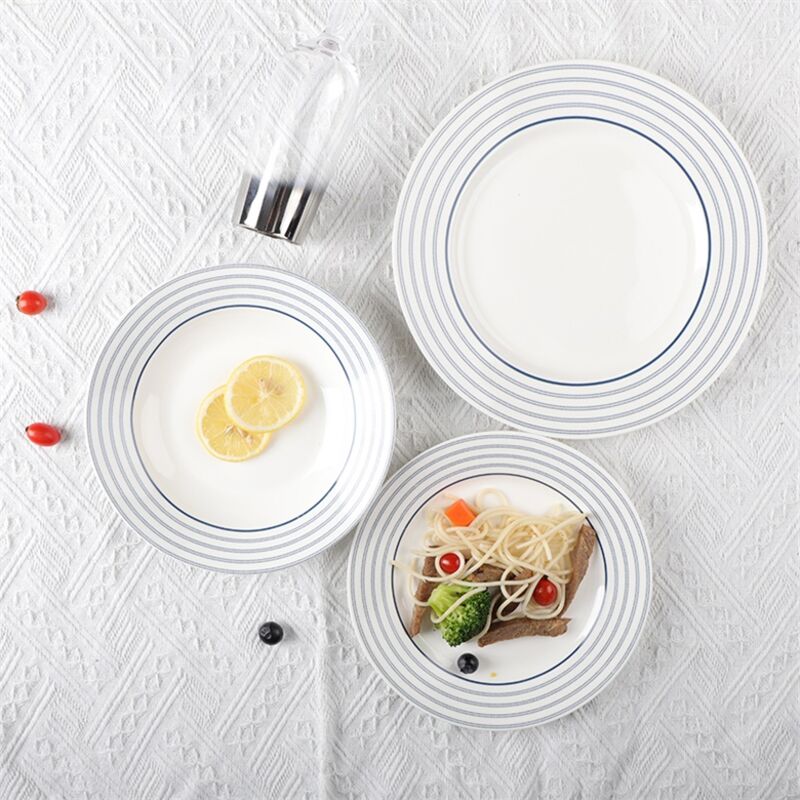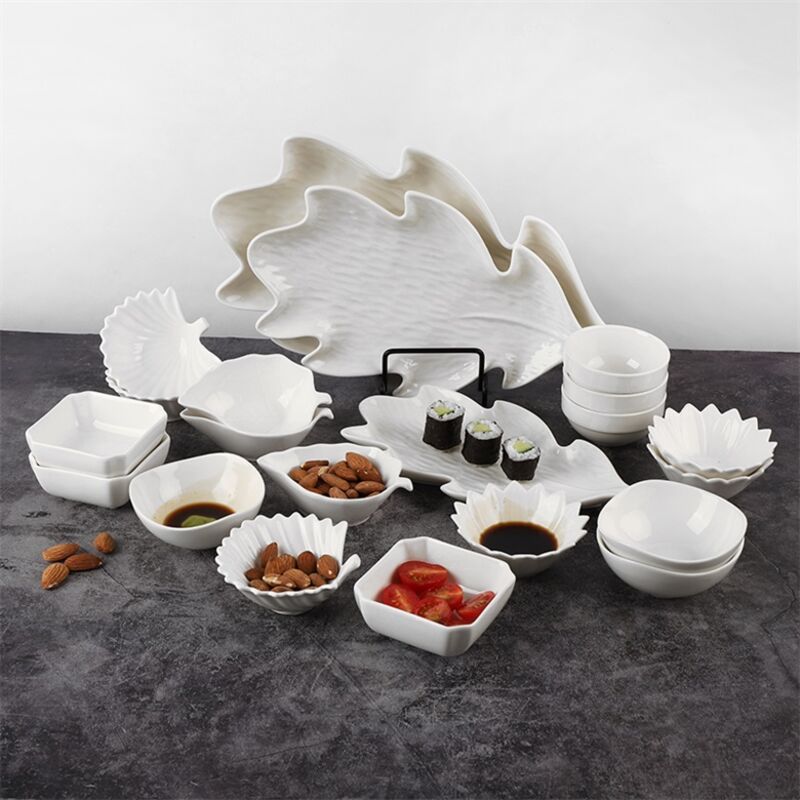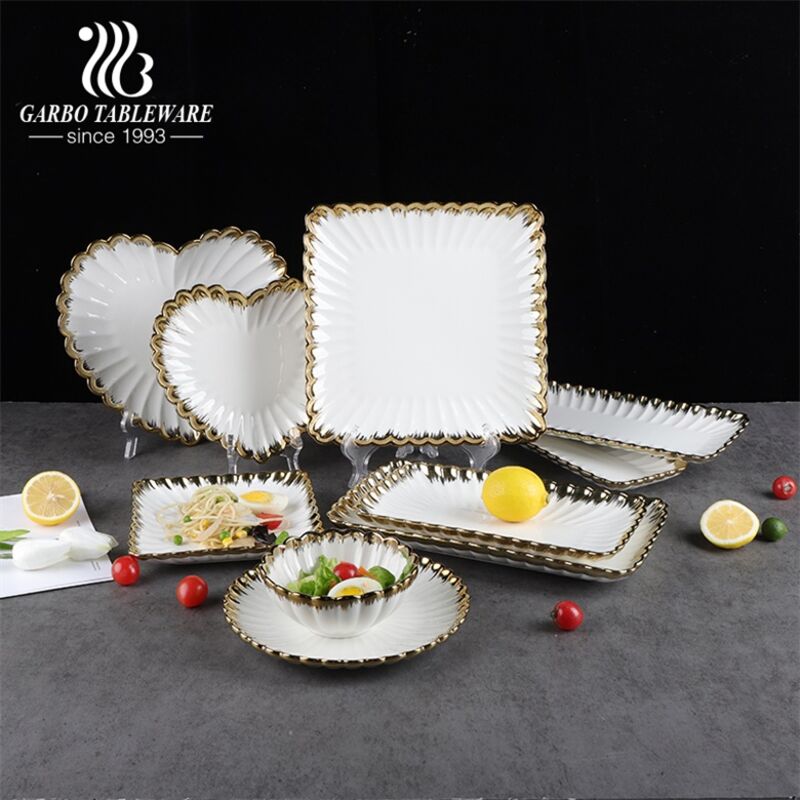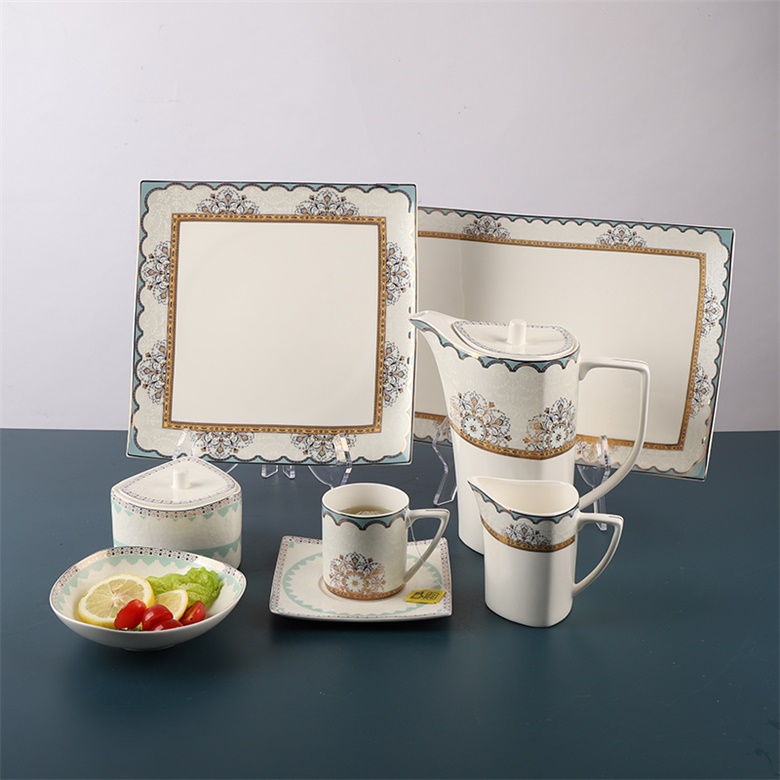Pulished on May. 12, 2023
Nowadays, the ceramic tableware is the mainstream for the the hotel daily use. Hereby, Garbo as a professional supplier and factory would like to introduce you below 5 popular ceramic tableware for hotels.
Magnesia porcelain tableware is mainly made of talc, a magnesium-rich silicate mineral, as the main raw material of porcelain clay, and is fired at a high temperature of 1380 degrees Celsius. Therefore, magnesia porcelain tableware has outstanding features
such as high whiteness, high strength, and high thermal stability. It is as white as jade and crystal clear. It is the best choice for tableware in star-rated hotels. It is now designated as the Great Hall of the People and Diaoyutai State Guesthouse.
Porcelain for state banquets.

Magnesia reinforced porcelain tableware is made of magnesia stone powder and high feldspar powder as the main raw materials, and is fired at a high temperature of about 1340 degrees Celsius. It has super high strength,
low brittleness, high whiteness, smooth glaze, and long service life. It is 3-5 times that of ordinary ceramics, and it is an ideal product suitable for disinfection tableware among all daily-use porcelains.

Although the cost of a single product is about 25% higher than that of white porcelain and ordinary strengthened porcelain, it has a long service life, low breakage rate, high-grade image, and the cumulative total investment of actual tableware is more than 50% lower. Porcelain is noble and elegant, the glaze is smooth and soft, and has the characteristics of high temperature resistance, rapid cooling resistance, high temperature, and not easy to scratch.
Reinforced porcelain tableware is high-quality porcelain clay with aluminum and magnesium added to it and fired at about 1300 degrees Celsius to recrystallize and magnetize them intoa substance that is resistant to collisions and collisions. The glaze is milky white and delicate to the touch. The color glaze of strengthened porcelain is darker than that of magnesia strengthened porcelain.
The tableware currently used in the disinfection tableware market has been gradually replaced by magnesia strengthened porcelain and magnesia porcelain.

New bone china tableware is a type of fine china that is made from a combination of bone ash, feldspar, kaolin, and other materials. The raw material for new bone china is primarily bone ash, which is made from the bones of cattle. The bones are cleaned and then heated to high temperatures to remove any organic material, leaving only the calcium phosphate.The production process for new bone china involves several steps. First, the raw materials are mixed together to form a clay-like substance. This substance is then molded into the desired shape, either by hand or by using a mold. The molded pieces are then fired in a kiln at temperatures of around 1200°C to 1300°C.

During the firing process, the new bone china is heated to a temperature high enough to cause the particles to fuse together and become dense and hard. The firing process can take several hours, and the exact temperature and time will depend on the specific recipe and the size and shape of the piece being fired.
One of the advantages of new bone china over traditional porcelain is its strength and durability. The addition of bone ash to the recipe makes the material more resistant to chipping and cracking, and also gives it a slightly translucent quality. New bone china is also often lighter and thinner than traditional porcelain, while still being strong enough to withstand daily use.
Stoneware tableware is a type of ceramic that is fired at high temperatures and is known for its strength and durability. The raw material for stoneware tableware typically includes clay, feldspar, and other minerals.
The production process for stoneware tableware involves several steps. First, the raw materials are mixed together to form a clay body. The clay body is then shaped into the desired form, either by hand or using a mold. The shaped stoneware is then fired in a kiln at temperatures of around 1200°C to 1300°C.
One of the advantages of stoneware tableware over other porcelain materials is its durability and resistance to chipping and scratching. Stoneware is also often thicker and heavier than other types of ceramic, which can make it feel more substantial and substantial in the hand. Additionally, stoneware is often more affordable than other types of high-quality ceramic.
However, stoneware is generally less translucent than other types of ceramic, and it can sometimes have small variations in color or texture due to the natural variations in the clay and firing process. Overall, stoneware is a popular choice for tableware due to its strength and durability, and its ability to withstand regular use and washing. The stoneware tableware is great for 2-3 stars hotel or countryside style hotel or B&B.